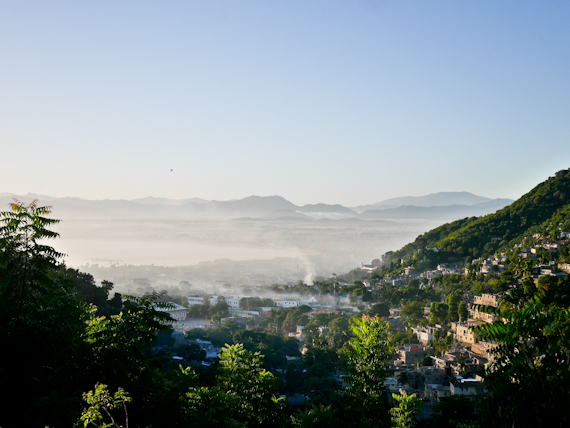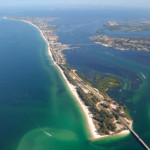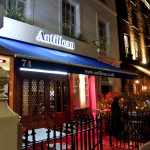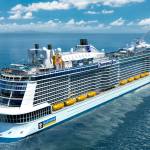In this Introduction to Haiti, Rupert Parker ventures to the island nation to find out what it has to offer foreign visitors.
I’m in Dajabon in the Dominican Republic about to cross the border into Haiti. I honestly don’t know what to expect since the news from the country is always universally bad.
I’m thinking Zombies, Voodoo and Papa Doc’s thugs, the Tonton Macoute, so it doesn’t look good.
Fortunately, I’m meeting a guide who will help me with the formalities and smooth my crossing. It doesn’t help that it’s a market day here, crowds desperate to grab a bargain and pickups leaving piled high with sacks of rice, chickens, chairs and people. I keep my hand on my wallet and hang on to my belongings as I go through two sets of immigration.
On the Dominican Republic side, they’re pretty officious but as I cross to the Haitien side, it’s far more relaxed. Everything goes surprisingly smoothly, although of course there’s money involved, and I’m soon into the country. We overtake the overloaded pickups, slowing down for the many Dos d’Ane, literally ‘donkey’s back’, or what we know as sleeping policemen.
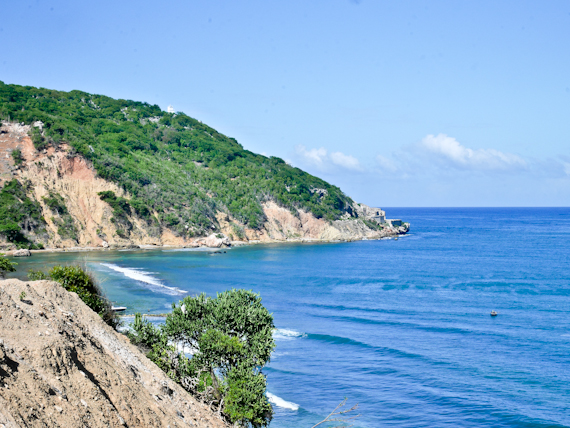
The 90-minute drive North West passes through flatlands, populated by sparse shrub, with bags of charcoal by the side of the road. In the small settlements, makeshift wooden shacks sell lottery tickets, private rather than state-controlled. The place doesn’t look as poor as I’d expected.
I’m soon by the sea in Cap-Haitien, originally Cap-Francais, and the second largest city in Haiti. Apart from the plastic garbage littering the beach, it’s an attractive place, stuffed with colourful late 19th century buildings, all balconies and tall shuttered doors in the colonial style. Motorbike taxis ply the narrow streets and kids, in their impressive starched uniforms, are just leaving school.
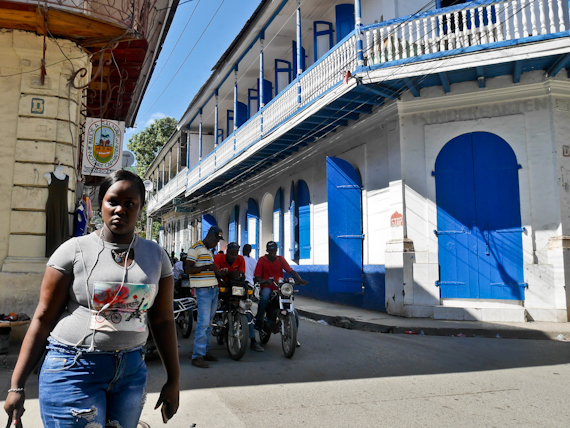
The Place d’Armes, the main square, has the Cathédrale Notre Dame on one side and the Hotel de Ville on the other. The Roi Christophe University is in one corner and students are eating their lunch, under the statue of Jean-Jacques Dessalines, the hero of the Haitian Revolution. There’s also a memorial to the slave leaders who were executed by the French here in the 18th century.
As I take the coast road out of town, alongside a deeply turquoise sea, I reflect that this has the potential to be one of the world’s great destinations. Security is still a potential problem and the beach needs a clean but it’s a beautiful spot. Cormier Plage, an attractive seafront hotel, has belonged to the same French family for a couple of generations and it makes a good base to explore further.
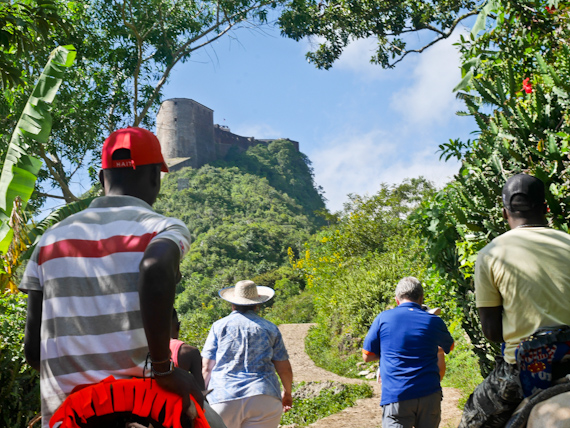
Next day, I set out for UNESCO World Heritage Site of the Royal Palace and Citadelle in Milot, around 30km inland. We climb gradually through lush tropical vegetation, on a narrow road which abruptly comes to an end. In front of me are the impressive ruins of the San-Souci Palace, destroyed by an earthquake in 1842.
Henri Christophe, King of North Haiti, built this palace between 1810 and 1813 and it was designed to impress. He wanted to show foreigners that black people were as civilised as whites. It all ended badly, as the King committed suicide in 1820, after suffering a stroke, with his enemies approaching. The palace lay empty until the 1842 earthquake finished it off.
A grand staircase, once flanked by bronze lions, leads inside, and there are a series of banqueting halls, private apartments and even a throne room. Unfortunately, the walls have been reduced to bare brick and it’s impossible to tell what was what. The grounds once contained extensive gardens with a large pool and the hospital is now a school. The adjacent church, where Henri was crowned, survived the earthquake, although the dome has had to be rebuilt. It’s one of the oldest in the country, dating from 1804.
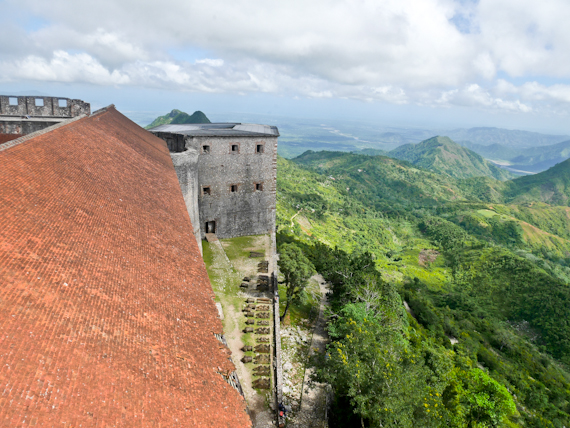
Henri’s greatest achievement, though is his Citadelle, perched on top of the mountain and inaccessible by car. There are horses for hire but I choose to walk the mile uphill and enjoy the stunning views. The fortress is hidden for most of the way, until suddenly the fortress walls, rising 40m from the rock, rise up in front of you. It took 20,000 workers 15 years to build and was part of a chain of fortifications to protect the newly independent Haiti from the French.
Apparently, it’s the largest fortress in the Americas but was never tested in battle. Originally it was fitted with 355 cannons, stolen from the French, and over 150 still remain, along with 50,000 cannon balls. It’s the world’s largest collection of 18th-century cannons and includes some British cannons, marked with the crest of the Duke of Marlborough.
You enter through a drawbridge into a network of large cisterns and storehouses, designed to provide a year’s food and water for 5000 soldiers. There are palace quarters for the king and his family and of course extensive dungeons. It covers a vast area of 10,000 square metres and King Henri is buried here. Unlike his palace, it was completely undamaged by the earthquake of 1842.
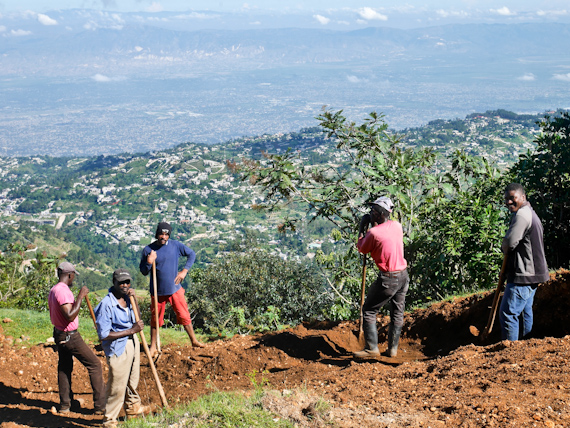
From Cap-Haitien, I take a short flight to the capital Port Au Prince or PAP, as it’s known locally. The city was almost flattened by the devastating 2010 earthquake but I’m surprised to see little evidence. Of course the Presidential Palace collapsed, now inaccessible behind boarded-up walls, and the Cathedral of Our Lady of the Assumption is in ruins, but otherwise rebuilding has been relatively swift.
The Musée du Panthéon National Haïtien lies safely underground beneath pretty sculpture gardens in the centre of town. It features key figures from the struggle for independence and tells the history of the country. Exhibits include the rusting anchor of Columbus’ flagship, the Santa María, the silver pistol with which Henri Christophe took his own life and ‘Papa Doc’ Duvalier’s trademark black hat and cane. Opposite is Aristide’s Bicentennial Tower, standing proud, although nobody can understand what it’s for.
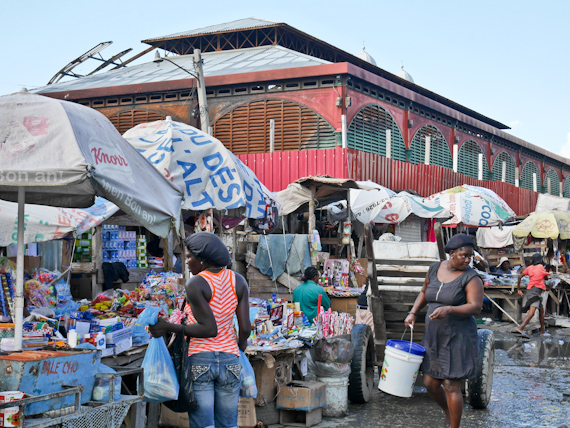
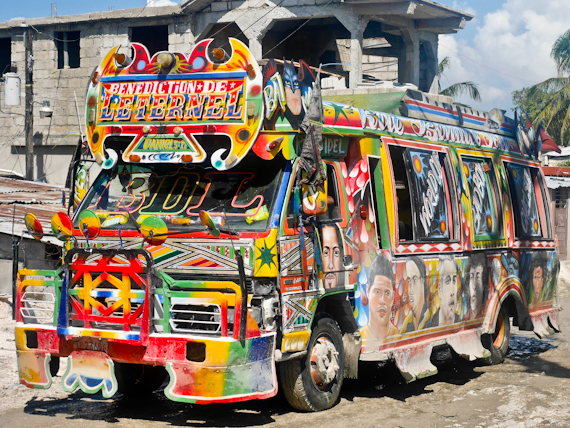
The liveliest part of town is around the Marché en Fer, two red iron-framed structures that were originally destined for a railway station in Cairo, but came to Haiti in 1891. One market hall is for produce whereas the other is an Aladdin’s cave of voodoo paraphernalia, artisan sculptures, masks and paintings. The streets around are packed with stalls, spilling over the pavements, selling everything imaginable.
The residential areas of Pacot and Bois Verna contain the few 19th-century gingerbread houses that survived the earthquake. Brick-filled timber frames hosting graceful balconies adorned with lacy wooden latticework define a lost era. Many of them are in an advanced state of decay, as these days the rich consider this part of town too dangerous. Perhaps the most famous example of this style is the Oloffson Hotel, near the centre, which featured in Graham Greene’s The Comedians.
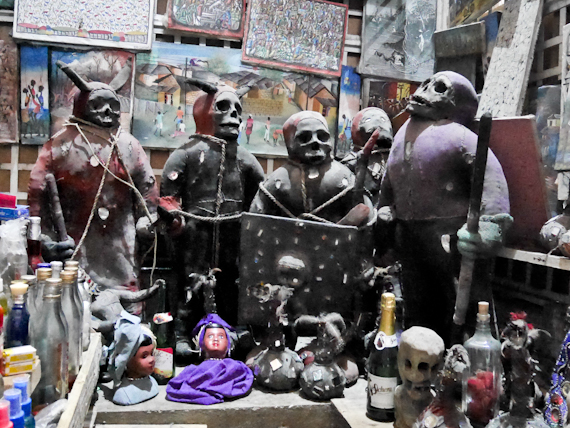
I’m ending my stay with an evening out in Pétion-Ville, a wealthy suburb known for its nightlife and restaurants. Port-au-Prince after dark is still something of an unknown quantity but, accompanied by my tireless guides, I finally get to hear some live music. There’s a party atmosphere, I’m the only white person there but everyone is friendly. After all my qualms about coming to Haiti, I feel I’ve finally arrived.
Tell Me More About this Introduction to Haiti
Experience Haiti has information about the county.
Explore Haiti offers bespoke tours and ground transportation.
Sunrise Airways flies internally and also has connections to the Dominican Republic.
Cormier Beach Resort is just outside Cap-Haitien on a beautiful stretch of coast.
The Karibe Hotel is a comfortable base in Port Au Prince and has excellent food.

